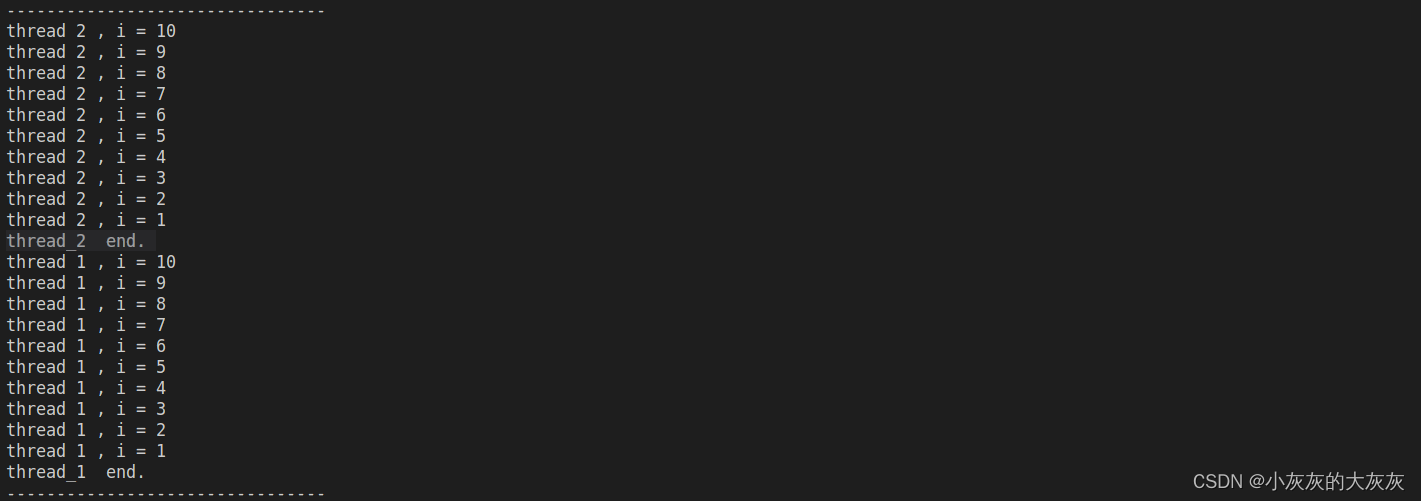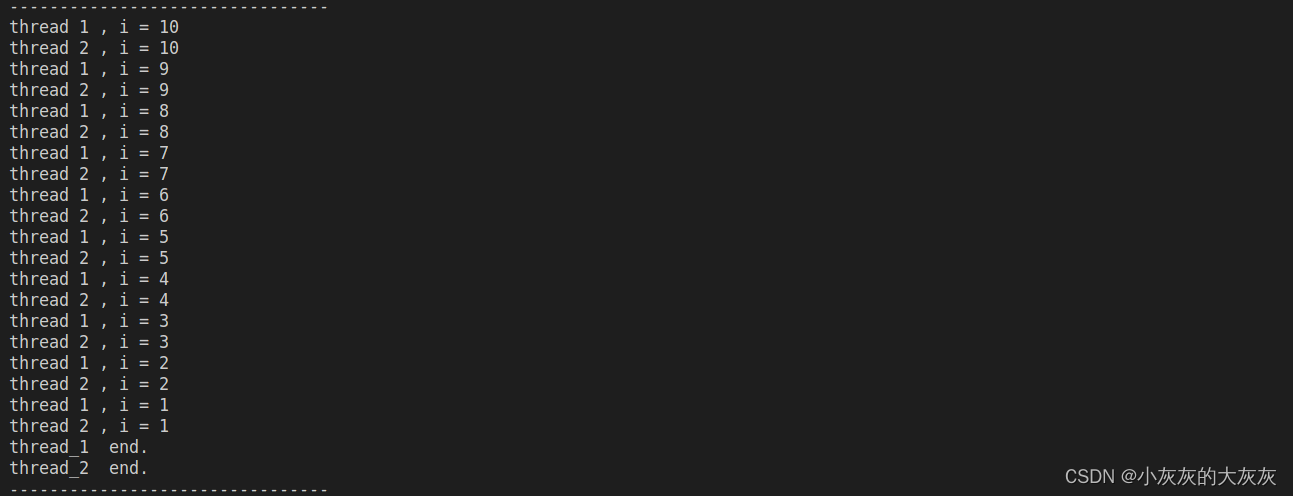实验
-
简介:我们启动
并行启动两个线程,但设置一个全局互斥锁,在两个线程中等待并占用互斥锁,然后输出日志。 -
代码
#include <iostream> #include <thread> /* C++ 多线程库 */ #include <mutex> /* C++ 互斥锁 *//* 定义一个全局锁子 */ std::mutex mt;/* 定义线程1 */ void thread_1() {/* 等待其他程序将这个锁解开,并以当前程序名义上锁, 在程序结束时自动解锁*/std::lock_guard<std::mutex> guard(mt);for(int i=10; i >0 ; i--){std::cout << "thread 1 , i = " << i << std::endl;std::this_thread::sleep_for(std::chrono::microseconds(100));}std::cout << "thread_1 end." << std::endl; }/* 定义线程2 */ void thread_2() {/* 等待其他程序将这个锁解开,并以当前程序名义上锁, 在程序结束时自动解锁*/std::lock_guard<std::mutex> guard(mt);for(int i=10; i >0 ; i--){std::cout << "thread 2 , i = " << i << std::endl;std::this_thread::sleep_for(std::chrono::microseconds(100));} std::cout << "thread_2 end." << std::endl; }int main(int argc, char const *argv[]) {std::cout << "-------------------------------- " << std::endl;/* 启动两个线程并行执行函数(注意这里已经开始运行了两个函数) */std::thread t1(thread_1);std::thread t2(thread_2);/* 阻塞等待线程的结束标志 */t1.join();t2.join();std::this_thread::sleep_for(std::chrono::seconds(20));std::cout << "-------------------------------- " << std::endl;return 0; } -
实验结果,
上述代码执行结果
-
如果
注释等待并占用互斥锁,实验结果如下
)


绳结全过程文档及程序)






固定在左上方某盒子内(如按钮)添加可拖动功能,使用react hook语法实现)






)

